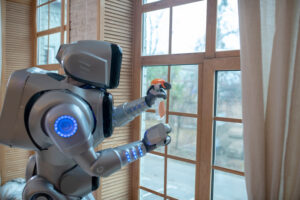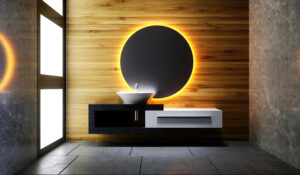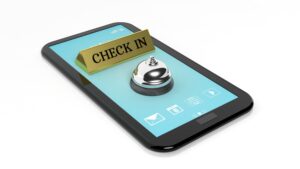How Can Hotels Help to Prevent the Spread of Germs

The Hospitality Industry has faced many challenges since the onset of the COVID-19 pandemic and ensuring that cleanliness is at the forefront is still a priority for hotels. With the current labor shortage and financial challenges that hotels are facing, they need to work hard to reduce the number of sick days and ensure that employees are healthy and prepared to work. Due to the pandemic, travelers are also more conscientious about hygiene during their hotel stays. And rightfully so, as hotels can be a source of germs due to the constant stream of travelers.
According to research conducted by Reckitt’s Lysol Pro Solutions, there are certain surfaces in communal areas in hotels and in guest rooms that harbor more germs and hotels can address this by cleaning more frequently and also by cleaning at the right times. The research found that in communal areas, germs are more likely to be highly concentrated on luggage carts, in the front desk area, on handrails and on elevator buttons. These surfaces are high touch areas that guests and employees come in frequent contact with and can increase the spread of germs.
According to the study, the cycle of transmission continues from surface to surface as guests move around the hotel. 60% of the times, viruses are transferred from the guest’s fingertips to surfaces within one hour of the surface being contaminated. As guests leave the communal areas, their fingertips can then continue to contaminate other surfaces that they come in contact with. 9 out of 10 guests can go on to contaminate door handles, light switches, and TV remotes, continuing the spread of viruses. However, proper cleaning can decrease the surface germ contamination by 79% and utilizing EPA-approved disinfectants will result in the killing of over 99% of germs.
What can Hotels do to Prevent the Spread of Germs?
Hotels can decrease the spread of germs with appropriate cleaning of high touch surface areas and with the use of EPA-approved disinfectants. Hotels need to ensure that high touch surface areas are disinfected frequently and at the right times to reduce the spread of germs. Hotel employees also face numerous challenges, including vomiting or diarrhea in communal bathrooms and need to be trained on how to ensure that those areas are properly disinfected. There are also various cleaning technologies that hotels can invest in that will speed up the cleaning process as well as ensure that high touch surface areas are properly sanitized.
Cleaning Technology for Hotels
Anti-Microbial LED Lighting
Anti-microbial LED lighting technology provides lighting while simultaneously disinfecting surface areas. Anti-microbial lighting technology can be embedded into the lighting system and can continuously disinfect against bacteria, germs, fungi and other microorganisms. This LED lighting technology can be embedded in high touch areas such as behind elevator buttons and have the ability to reduce surface contamination by 99%. Anti-microbial technology provides around the clock automated cleaning and works in conjunction with other cleaning methods.
Hotels have the option of using anti-microbial lighting technology in different modes depending on where they plan to be installed. The white anti-microbial and light mode is used in high traffic areas and the violet enhanced anti-microbial light mode offers higher doses and can be used in empty areas where lighting is not required.
Sanitation Robots
Sanitation robots use cleaning technology to clean guest rooms and public areas and have the ability to work around the clock. Robots can work around the clock to clean guestrooms and to ensure that bathrooms and public areas are sterilized. Robots can greatly reduce the number of hours that it takes to clean, allowing staff to efficiently finish their cleaning duties. Robots also require little maintenance, aside from changing cleaning bags and ensuring that batteries are kept charged.
Electrostatic Sprayers
Electrostatic sprayers are a great tool for hotels to disinfect surface areas quickly and effectively, ensuring that viruses are killed and reducing the risk of transmission. Electrostatic sprayers deliver an electric charge that allows the disinfectant droplets to cling to surfaces to ensure that areas are properly sanitized.
UV Light Technology
UV light technology is another option for hotels, as it has the ability to destroy 99.9% of bacteria and viruses and UV light is significantly more effective than using the cloth and disinfectant method. UV light technology has been developed into a handheld device, hotels can use sterilization wands to effectively clean guest rooms and high touch communal areas.
Contactless Technology to Decrease Touching
Hotels have been investing heavily into contactless technology, 54% of hoteliers reported that their highest priority is to adopt technology that improves or eliminates the need for the front desk experience between now and 2025. These technologies are highly convenient for guests and helps hotels to operate more efficiently, especially during the current staffing challenges. Hotels can use technology to create a contactless experience for guests from check-in to check-out, helping to decrease their interaction with hotel employees and other guests, and helping to reduce the spread of germs.
Contactless Check-in and Check-out
Mobile check-in and mobile key allow guests to check-in from anywhere and enables them to arrive at hotels and go directly to their rooms. This allows guests to skip the front desk lines and lengthy paperwork, saving valuable time and minimizing physical contact. Mobile key allows guests to access guest rooms, elevators, and conference rooms without the need to use key cards or to visit the front desk.
In-room Technology
Hotels have a lot of options when it comes to in room technology that can offer guests a safer hotel stay, as well as the convenience and high-tech hotel experience that they want. Voice control technology enables guests to control the room lighting, the temperature, and the entertainment system without the need to touch any surface areas. Guests can also control these amenities with their mobile devices, as well as place room service orders, pay bills and checkout without the need to contact or visit the front desk.
Hotels Have the Right Tools
Hotels have all the tools in place to create a safe environment for guests, with the appropriate cleaning, the use of cleaning technology and the investment in contactless technology, hotels are not only creating a safer hotel experience for guests, but a convenient one that will keep them returning. 73% of travelers were more likely to stay at hotels that offered self-service technology and 38% wanted a fully self-service model, with staff only available upon request.


